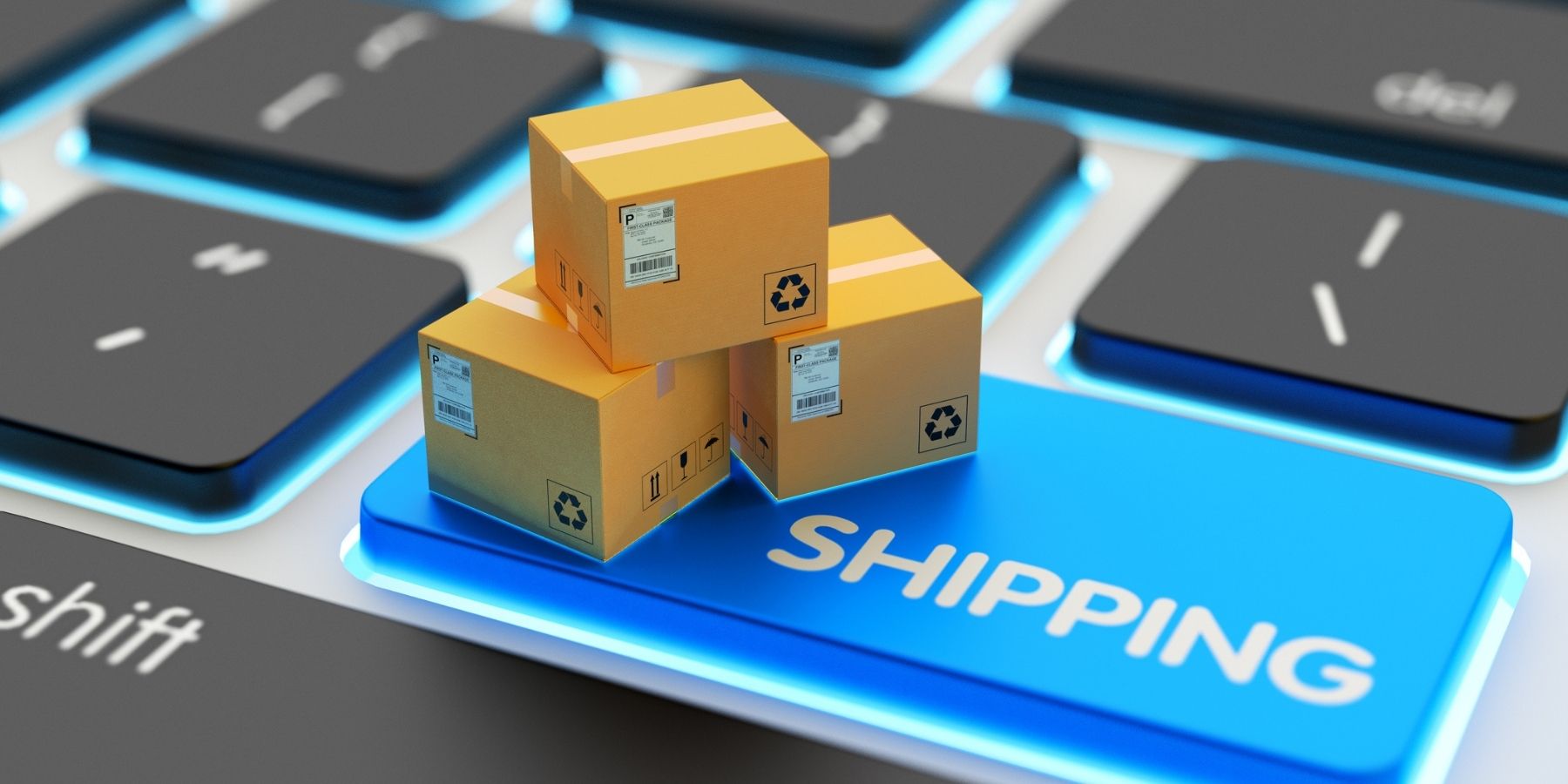A quick step-by-step guide on creating your first ecommerce store
With shelter-in-place and social distancing orders popping up around the globe, many small and mid-sized brick and mortar retailers are having to reevaluate their business dynamics overnight. For many of these companies, part of this plan includes having to create an eCommerce website as soon as possible.
Under pressure to boost sales, but without technical expertise from full-time IT staff, this sort of pivot can cause a lot of anxiety. In particular, about where to start.
In this post, we’ll provide a quick list of steps you’ll need to take in order to create an eCommerce website on your own. With this guide, you will be able to get your first store up and running quicker than you think.
12 Steps to Launch Your First eCommerce Website
1. Purchase your domain name
The first thing you need to do when you create an eCommerce website is purchase a domain name. Every website needs to have a domain name for a brand and server to be hosted at all. When choosing your domain, make sure it matches closely with your company name. Additionally, you will want to add a keyword in your domain to improve your search engine rankings. Once you have a few names on hand, you can see if the domain is available by searching through a domain registrar, like Domain.com, Bluehost, HostGator or GoDaddy. Before you purchase your domain name though, double check that your eCommerce platform doesn’t automatically buy and configure your domain for you.
2. Select an eCommerce platform
An eCommerce platform is where you manage your products, categories and checkout process. Essentially, it’s how you oversee all of your website’s information and pages. If building your site is a time-sensitive task, it’s best to just get something up and running instead of spending hours researching and testing between all the platform options out there. For the quickest turnaround possible, we recommend BigCommerce, Shopify or WooCommerce.
3. Pick what products you want to sell
When building out your first site, it’s not the greatest idea to offer your complete inventory right away. Be strategic here and think about what your best sellers are in-store and what you think will be popular to purchase soon. Go with items that have higher margins or ones that are lightweight and easier to ship. If you’re unsure about this, you can always research trending products and niches via tools like Google Trends and TrendHunter.
4. Choose a website theme
A website theme determines how your store will look and the way customers find your products. From a branding perspective, you might want to pick a theme similar to how your physical store appears. When choosing a theme, you will also want to think about your product categories and the type of products you want to highlight on your front page. Focus more on finding a theme that delivers on user experience, but is still within your budget. This will likely be either a free theme or an affordable paid theme offered through your platform.
5. Create product pages
Product pages have the biggest impact on your conversions because they communicate the benefits of what you’re selling. When naming your products, stick with names that are direct instead of being too creative. You can always go back and edit this information later. Write product descriptions that are optimized for SEO and include key information like price, weight, dimensions and color variations. You will also want to create custom page titles and meta descriptions using a templated, repeatable format to save time. For your product photography, set up a small area in-house to take all your photographs together and from multiple angles. High-resolution photos are absolutely a must to draw in more customers. If you’re nervous about this, there are a ton of how-to videos available on YouTube for your viewing pleasure.
Read our recent blog “How to Prepare Your Online Product Catalog” for additional tips here.
6. Build company pages
After your product pages are built, you will want to create a simple homepage. It should highlight a few of your most popular products (3-5) along with a call to action above the fold. Doing this ensures your visitors see the best you have to offer, increasing the likelihood that they will purchase something. You will also want to write a compelling About Us page that includes your company values, the type of buyer you’re targeting and any major milestones you’ve achieved.
7. Determine your shipping strategy
By the time a customer hits the checkout page, the last thing they want to see are high shipping prices that don’t make sense for what they are buying. Figure out how much you want to charge for shipping on a product level, geographic level and even customer level. You also need to determine what type of delivery methods (ground, same-day, curbside pickup) and carriers (UPS, FedEx) that you want to offer them. Additionally, think about any promotions you want around free or discounted shipping, like cart quantity or price thresholds.
8. Use third-party apps for customization
In some cases, your eCommerce platform’s native functionality may not do exactly what you want out-of-the-box. Maybe you need help with inventory management, order processing, email marketing, fulfillment, taxes or shipping optimization. If there’s something specific you’re looking for, you should explore the marketplaces and app stores provided by your platform. Many of the apps offer a free trial period, plus additional discounts during this time to help brick and mortar stores get online fast.
Have complex shipping requirements? ShipperHQ has a free 30-day trial available to all merchants. To sign up, visit our website.
9. Select your payment gateway
The main point of setting up an eCommerce website is to start getting paid. When thinking about your payment gateway, go with what’s the easiest to set up and can accommodate the most people. If you already use Square in-house, it’s easy to sync directly with your brick-and-mortar inventory and checkout. We also recommend setting up PayPal since not all customers want to enter their credit card information all the time (especially on mobile devices). Most payment service providers (PSP) like this will also give you the choice of using their payment pages or self-hosting the page on your checkout. Most merchants choose the self-hosting option because it creates a more seamless experience.
10. Figure out your fulfillment process
Your customer has placed an order online. How do you intend to get it into their hands? There’s a couple ways to do this. Maybe initially you want to target local customers in your area. Depending on the volume of shipments you receive, and number of staff available, fulfilling in-house might make sense here. You will have to purchase packing materials, connect with a carrier (or courier service) about negotiated rates and pickup. Another option is to work with a third-party service for packing and fulfillment. While third-party providers can be more costly, they can make your operations a lot easier to handle so you can focus on other parts of your online business.
Thinking about doing local delivery yourself? Learn more about how you can offer same-day delivery with ease.
11. Set the right product prices
As a brick and mortar store, you probably know how much you want to charge customers for your products. However, it’s always a good idea to compare prices with your online competitors, especially if you’re so new to it. Your customers want to be charged a fair price, but it’s ultimately up to you to decide whether you want to match or beat whatever someone else is offering. Keep track of direct costs (materials, packaging, etc) and fixed costs (rent, wages) so you can calculate a break-even figure. You may even want to consider adjusting prices for different territories or markets, if you deem it necessary.
12. Get your SSL Certificate
SSL Certificates let buyers know that your site is extra secure. While SSL Certificates have been around for a while, it’s now standard for anyone who deals with private information like email addresses or payment information. Depending on what platform you work with, a free SSL Certificate might also be pre-built with your store. On top of this, there are different tiers for SSL Certificates that offer extra monitoring, insurance and security. If you are handling credit cards yourself, then going with one of these more secure options is best practice.
One Last Thing: Testing
You’ve created an eCommerce website. Before you officially launch your online store, it’s vital for you to test your website and buyer journey! Otherwise, you may end up with pager errors or snags in the user experience that can harm sales.
A few things you need to test after you create an eCommerce website include:
- Products, photos and descriptions – Are there any blurry images or misspellings?
- Call to Action buttons – Where do your links lead?
- Navigation – Does it seem intuitive?
- Taxes – Do you charge the correct amount per a user’s location?
- Pricing, promotions and discounts – Is this showing up correctly for your items?
- Payment gateways with test orders – Can a shopper go through the checkout process?
- Mobile functionality – Are all pages accessible and easy to browse?
Conclusion
As you can see, there’s a lot involved to create an eCommerce website. However, you can get it done sooner than you think. With the retail landscape changing day to day, you need to adapt so you won’t get left behind.
As a small business, your local customers want to support you. By quickly putting together an eCommerce website, and figuring out how to get orders to your customers, you can create another avenue for business and start selling again.






